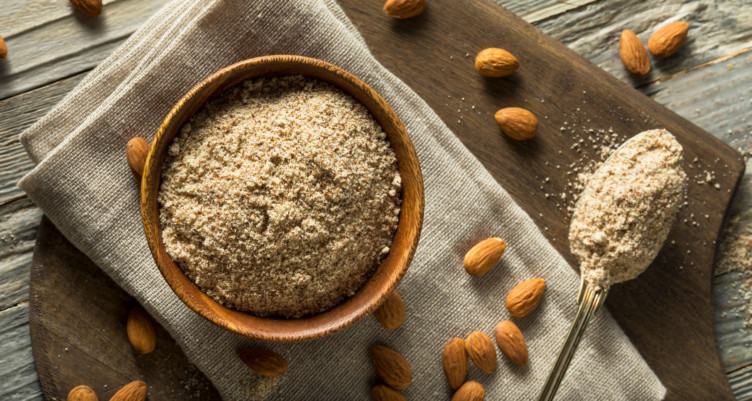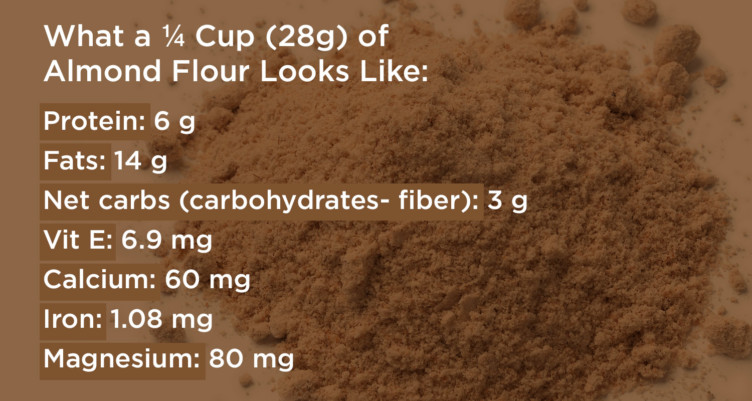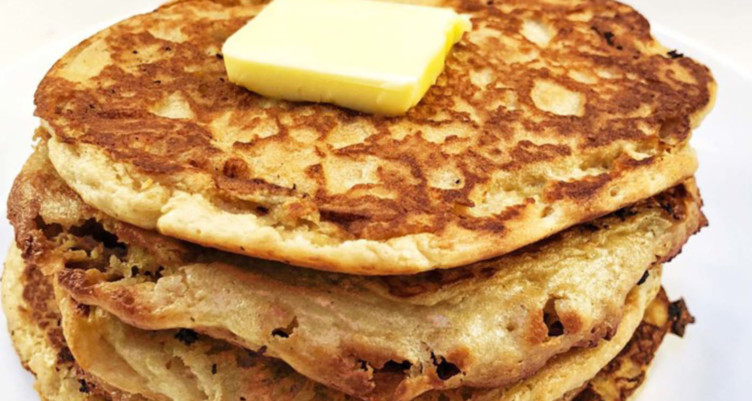Almond Flour Benefits & Recipes – What You Need to Know About This Paleo Flour

- Almond flour is the baking darling of the Paleo and keto worlds because of its low-carb, gluten-free nutrition profile
- Among its benefits: High-fat, high-fat almond flour won’t make your sugar levels spike and is very keto-friendly
- Almond flour adds extra richness and moisture to recipes, making them ideal for satisfying breads, cakes and pancakes
Why do so many Paleo, keto and Bulletproof eaters extol the benefits of almond flour every chance they get? Even when you’re on a so-called restrictive, gluten-free diet, sometimes you really just want a stack of fluffy pancakes, smothered in butter (organic, grass-fed butter, of course). Luckily, removing carbs and gluten from your diet doesn’t have to mean turning your back on the foods you love. With Bulletproof-approved baking alternatives like almond flour and almond meal, you can still enjoy a gluten-free, keto-friendly treat without derailing your performance (or falling off the train completely).
Nuts are mostly considered “suspect” on the Bulletproof Diet, due to potential mold contamination, but used in moderation, almond flour can be a useful tool to shake up your Paleo baking repertoire. This article explore the benefits of almond flour, along with its downsides, nutrition info, and how to use it all kinds of recipes, for nutritious, satisfying, guilt-free baked goods.
Benefits of almond flour
 The high-fat, low-carb nutrition profile of almond flour makes it an ideal choice for keto-friendly baking. Packed with insulin-regulating fiber, almond flour helps keep your energy levels and focus optimized without the blood-sugar spike (and crash) of high-glycemic flours. In fact, almonds have been shown to lower blood sugar and improve glycemic control, possibly thanks to high levels of magnesium, which boosts insulin-sensitivity.[1][2]
The high-fat, low-carb nutrition profile of almond flour makes it an ideal choice for keto-friendly baking. Packed with insulin-regulating fiber, almond flour helps keep your energy levels and focus optimized without the blood-sugar spike (and crash) of high-glycemic flours. In fact, almonds have been shown to lower blood sugar and improve glycemic control, possibly thanks to high levels of magnesium, which boosts insulin-sensitivity.[1][2]
Almonds are also an excellent food for improving heart health and blood chemistry. Studies have linked almond consumption to increased HDL cholesterol, and lowered total and LDL cholesterol, blood triglycerides, fasting blood sugar and blood pressure. [3][4]
On top of adding a helpful dose of protein to your baked goods, almond flour packs in antioxidants and trace minerals like iron, manganese and copper. It’s also an excellent source of riboflavin (vitamin B2) and vitamin E, essential vitamins for healthy skin, immune function, energy production and preventing oxidative stress. [5][6]
Almond flour nutrition and carbs

In ¼ Cup (28g) Almond Flour:
- Calories: 160
- Protein: 6 g
- Fats: 14 g
- Carbs: 6 grams
- Net carbs: 3 g
- Sugar: 1 g
- Fiber: 3 g
- Vitamin E: 6.9 mg
- Calcium: 60 mg
- Iron: 1.08 mg
- Magnesium: 80 mg
Downsides to almond flour
 Almonds are a high-risk food when it comes to mold contamination. To ensure you’re getting mold-free nuts, buy only flour that come in a sealed package (not out of a bulk bin). Naturally, almonds (and other nuts and seeds) contain high levels of omega-6 fats that oxidize (go bad) easily and can contribute to inflammation. When adding these foods to your diet, be sure to balance with omega-3-rich foods like wild-caught salmon or pasture-raised eggs.
Almonds are a high-risk food when it comes to mold contamination. To ensure you’re getting mold-free nuts, buy only flour that come in a sealed package (not out of a bulk bin). Naturally, almonds (and other nuts and seeds) contain high levels of omega-6 fats that oxidize (go bad) easily and can contribute to inflammation. When adding these foods to your diet, be sure to balance with omega-3-rich foods like wild-caught salmon or pasture-raised eggs.
Related: The Bulletproof Guide to Omega-3 vs Omega-6 Fats
Almonds are also high in phytic acid and lectins, nutrient-sapping compounds that can also be tough on your gut. Fortunately, most of the lectins are contained in the skin of the almond, so you can reduce your lectin exposure by opting for almond flour instead of almond meal.
Due to these factors, all nuts (except for coconut) are considered “suspect” on the Bulletproof Diet. Baked goods made with almond flour or other keto flours are best as treats, and shouldn’t be a huge part of your diet. Use them instead to spice up your carb re-feeding days, or for special-occasion desserts. If you have trouble losing weight or suffer from headaches, joint pain, or other autoimmune symptoms, you may benefit from removing nuts from your diet completely, and reintroducing them once symptoms subside.
How to bake with almond flour
 Almond flour and almond meal should have just one ingredient: almonds. That’s really all they need, so watch out for “baking blends” with preservatives or other flours. Almond flour is made from blanched and peeled almonds, making it great for recipes with lighter textures such as cakes. Almond meal contains the almond and skin, so is coarser and heavier, and better suited to denser foods like cookies, pizza crust or crumbles.
Almond flour and almond meal should have just one ingredient: almonds. That’s really all they need, so watch out for “baking blends” with preservatives or other flours. Almond flour is made from blanched and peeled almonds, making it great for recipes with lighter textures such as cakes. Almond meal contains the almond and skin, so is coarser and heavier, and better suited to denser foods like cookies, pizza crust or crumbles.
The fat in almond flour or almond meal adds some extra moisture to baked recipes, and also makes them more rich and filling. Because it’s heavier and not as sticky as wheat or other flours, almond flour recipes generally call for extra egg or baking powder to help with binding and fluffiness.
The high fat content of almond flour also means that it can go rancid easily. Prevent oxidation of these fats by storing your almond flours in dry, airtight containers in the fridge or freezer. The oil in almonds is stable at high temperatures, making this flour a safe choice for baking.
Almond flour recipes
 Almond flour makes an awesome alternative flour for your favorite baked goods, but the uses don’t stop there. Try some of these Bulletproof-approved almond flour recipes, or use yours to thicken soups, “bread-crumb” fish, or bulk up a smoothie.
Almond flour makes an awesome alternative flour for your favorite baked goods, but the uses don’t stop there. Try some of these Bulletproof-approved almond flour recipes, or use yours to thicken soups, “bread-crumb” fish, or bulk up a smoothie.
Gluten Free Almond Flour Pizza Crust



